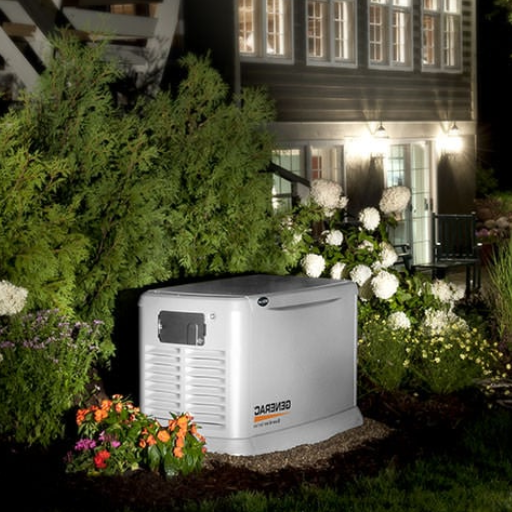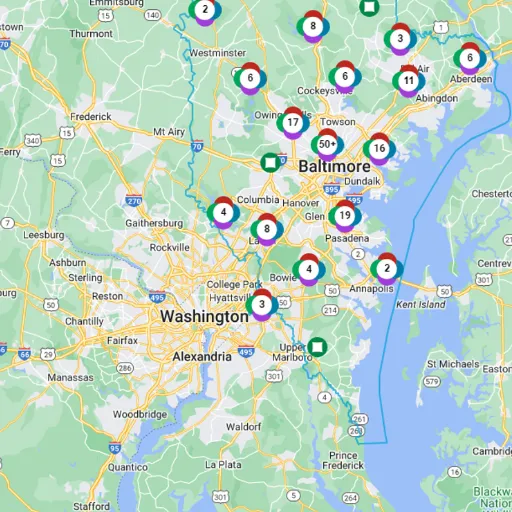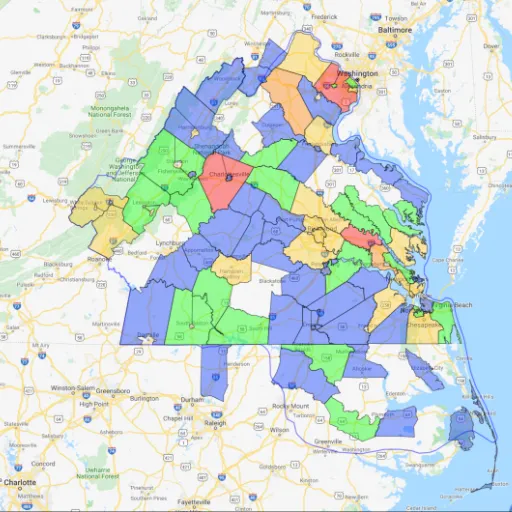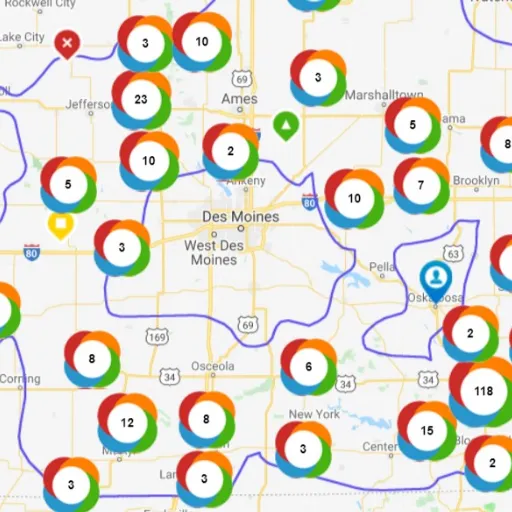A home standby generator is a key investment for guaranteeing electricity during outages. With a standby generator, the lights will function, electricity guzzlers will continue to be used, and the family will be safeguarded during sudden emergencies like storms, failure of power grids, and other unforeseen situations. But how do I install this feature, and what do I need to consider during the process? This guide aims to assist you with everything. You will learn everything from the basics of standby generators to installation requirements, planning, safety tips, and essential steps. Say goodbye to uncertainty. It’s time to prepare and lay the groundwork for protecting your home, giving you extra comfort knowing that the power supply to your home will continue uninterrupted.
How Does a Home Standby Generator Work?

A home standby generator ensures that power is still supplied to your home during an outage. It is installed outside your house and connected directly to the home’s electricity cables. The generator receives power from natural gas or propane, meaning fuel must not be manually supplied. The transfer switch automatically turns the generator on during an outage and off once mains power is restored. The generator will then switch back to standby mode.
What is a Home Standby Generator?
Stages one to six will be done the same way as the first paragraph; combining different types of power with natural gas-powered fuel will be easier and more efficient than regular refuels. There are two stairs for fitting the power lines outside and using a wide-ranging power supply to turn on various circuits of the house, ensuring critical circuits like the refrigerator, lights, fan, and other devices are always connected to power, so the devices will run autonomously, making life simpler and preventing interruptions. The standby generator contains an auto-detaching power source that activates during outages.
A home standby generator ranges between 7 and 60 kW, depending on the use case; some even surpass this range. Industry data suggests that the average cost of installing a standby generator ranges from 5,000 to 5,000 $ 15,000, taking equipment and installation into account. These prices vary based on the brand, size, and complexity of the system. Generac, Kohler, and Cummins are leading manufacturers who dominate this market and offer advanced features such as Wi-Fi connectivity for remote monitoring, quieter operation, and enhanced energy efficiency.
Moreover, these generators are remarkably reliable and, with proper maintenance, can have a lifespan exceeding 20 years. They have a wide array of applications, from HVAC units during extreme weather to powering medical devices to food storage. In addition, many of these modern generators meet emissions standards, making them environmentally friendly and effective solutions for power disruptions.
How Does a Transfer Switch Function?
A transfer switch seamlessly transitions between the main power (electric grid) and backup sources such as generators. It ensures optimal power changeover without back-feeding to the grid, seamless switching of power sources, and shielding them from damage. Here are five insights on how a transfer switch operates:
- Isolation of Power Sources
A transfer switch ensures complete isolation of main power from a secondary source like a generator. This ensures no overlap or interference, which can lead to electrical feedback.
- Automatic or Manual Operation
Depending on the model, switches have manual and automatic operation features. Automatic switches detect outages and shift to a secondary source, while manual switches require the user to trigger the switch to change the power source.
- Load Management
Most switches come equipped with load management options that allow prioritization of critical power circuit tracks to ensure optimal generator power utilization.
- Safety Compliance
Here, safety standards set by national electric codes are upheld, which mitigate risks associated with power transitioning, such as electrical fires or accidents.
- Light Indicators and Alarms
Modern transfer switches are often equipped with indicator lights or alarms that notify users of any issues related to power flow and when the switch has occurred.
A transfer switch simplifies the use of backup power and improves safety for users and utility personnel. Proper installation by a licensed electrician ensures optimal performance.
Benefits of Having a Backup Generator
| Key Benefit | Description |
|---|---|
|
Uninterrupted Power Supply |
Ensures electricity during outages. |
|
Automatic Operation |
Activates immediately after power loss. |
|
Protects Essential Devices |
Keeps medical and safety systems running. |
|
Preserves Food |
Prevents spoilage by powering refrigerators. |
|
Comfort and Convenience |
Maintains heating, cooling, and lighting. |
|
Prevents Property Damage |
Avoids damage from power surges or frozen pipes. |
|
Fuel Efficiency |
Uses natural gas or propane efficiently. |
|
Increases Home Value |
Adds resale value to your property. |
|
Peace of Mind |
Reduces stress during emergencies. |
|
Reduces Grid Dependence |
Provides reliable power during grid failures. |
What is the Cost to Install a Generator?

The price for installing a generator can differ depending on the type, size, and complexity of the generator I choose, as well as local labor costs. As a general guideline, homeowners should budget approximately 3,000to3,000to5,000 for a standby generator and its associated installation expenses. For portable generators, which don’t require professional installation, prices typically range from 500to500to2,000. Speaking with an electrician or contractor licensed in my area would be best to receive the most accurate estimate.
Factors Affecting Installation Costs
The expenses needed to install a generator in my home depend on a few things: the type of generator I need, the size of the generator, how complex the installation is, and of course, the prevailing labor costs. With larger standby generators, installation has the potential to become pricier due to additional required wiring or permits. Conversely, more compact standby generators are simple to install, leading to lower costs overall. Portable generators, being the most affordable option, don’t require professional installation, thus lowering the overall cost.
Estimated Total Cost for a Whole House Generator
| Key Parameter | Estimated Cost |
|---|---|
|
Generator Unit |
$4,000–$18,000 |
|
Installation Labor |
$1,500–$6,000 |
|
Gas Piping |
$650–$2,500 |
|
Transfer Switch |
$1,200–$3,500 |
|
Concrete Pad |
$500–$1,000 |
|
Electrical Work |
$2,500–$3,500 |
|
Fuel Costs (Daily) |
$90–$220 (20kW unit) |
|
Maintenance (Annual) |
$150–$300 |
|
Total Cost Range |
$5,000–$25,000+ |
What to Consider Before Generator Installation?

- Power Needs: Figure out the scope of power required by your household to make sure you get the right generator size. List the critical devices and appliances you wish to keep operating during an outage.
- Fuel Source: Choose a fuel type, such as natural gas, propane, or diesel. Go with whatever is cheapest and most accessible in your region.
- Location: Choose a generator location that is safe, well-ventilated, and away from windows and doors to minimize the danger of carbon monoxide poisoning.
- Permits and Regulations: Find out whether you need permits for your installation and the local laws. Some locations have unique noise and placement restrictions.
- Professional Installation: Employ a licensed contractor to ensure that the system is connected correctly and that all safety requirements are followed.
Do You Need a Permit?
Permit requirements for generator installation differ from place to place, but permits are generally needed for building code and safety compliance purposes. Always check with local regulations or a licensed professional for clarification.
Selecting the Right Generator System
Ensuring your generator system works optimally for your needs requires advanced planning and consideration of various factors for maximum efficiency, cost-effectiveness, and reliability. Below are some suggestions that will help you in your decision-making journey.
- Think About the Power You Need
Understanding the requirements for power in your workplace or home is one of the most critical steps. What are the most essential appliances or devices must a generator support, and how much power do they typically consume? HVAC systems, refrigerators, medical devices, and lighting are examples of everyday appliances.
- A refrigerator generally consumes 600-800 watts of power.
- A Central Air Conditioner uses between 3000 and 5000 watts.
- General office equipment averages between 200 and 400 watts.
To maintain the appropriate margin, your total wattage consumption should be 20-30% above the mark for any power generator you purchase. If this is not maintained, there’s a high chance of overloading the generator.
- Generator Types
Generators are classified into different categories based on fuel source and their function:
- Standby Generators are permanent installations that run on natural gas or propane. They automatically turn on during power outages and can generate between 7,000 and 20,000 watts, perfect for mid- to large-sized homes.
- Portable Generators are an ideal solution for temporary and emergency use. They can run on gasoline or propane and offer a power range of 2000-10000 watts.
Solar Generators: Eco-Friendly and Silent Solar generators store energy in batteries, making them eco-friendly and silent. They have a low capacity of 1000 to 5000 watts, but are great for smaller uses.
- Fuel Choices and Availability
Fuel selection is essential for the operation of a generator. The most common options include;
- Gasoline: A common fuel source. Stores well.
- Propane: More efficient, but burns cleaner and needs a separate storage tank.
- Diesel: Cost-effective for severe workloads, tends to be used in industrial-sized or large-scale applications.
- Natural Gas: Cost-effective and economical, primarily used in standby generators linked to utility lines.
- Noise Levels
Generators produce noise at different levels depending on the model and producer. Look into the rating in decibels dB to ensure it meets your preferences and local noise prohibition policies.
- Portable generators: 80-90 dB
- Standby generators: 50-70 dB
- Budget and Maintenance Costs
The budget mainly depends on the type and power output of the generator:
- Portable Generators: 500to500to2500
- Standby Generators: 2000to2000to10000 with added parts for installation
- Servicing is usually made to standby systems, requiring an annual oil change, fuel inspection and battery checks
- Additional Features
Enhanced features allow for added ease of use:
- Back-up Power Supply: Power provides power circuitry to the generator.
- Remote Monitoring: Lets you control and check the status of virtually everything from smartphone apps.
- Eco Mode: Increases fuel efficiency while lowering power output.
Analyzing your energy consumption, budget, and local factors can help you choose a generator system that offers dependable backup power during critical times. Always work with a licensed professional to assist in proper sizing, installation, and adherence to local regulations.
Choosing Between Natural Gas and Propane
| Key Parameter | Natural Gas | Propane |
|---|---|---|
|
Energy Density |
Lower energy per unit volume |
Higher energy per unit volume |
|
Fuel Availability |
Connected to home gas lines |
Stored in portable tanks |
|
Environmental Impact |
Burns cleaner, less CO2 |
Lower emissions than gasoline |
|
Cost |
Generally cheaper fuel |
Higher upfront and fuel costs |
|
Storage |
No storage needed |
Requires dedicated storage space |
|
Shelf Life |
Continuous supply, no degradation |
Indefinite shelf life |
|
Portability |
Stationary, not portable |
Portable and flexible |
|
Power Output |
Slightly lower than propane |
Higher power output |
|
Maintenance |
Minimal, depends on gas supply |
Requires tank refills and monitoring |
|
Best Use Case |
Homes with gas lines, low maintenance |
Remote areas, long-term storage |
How to Install Your Standby Generator?

- Choose the Location: Although they are valid for use elsewhere, make sure to place the generator outside in a suitable location that has a reliable, stable, and level surface in proximity to your electrical panel and fuel supply. Windows, doors, vents, capsules, and other housing parts must be devoid of any potential obstruction to guarantee unrestricted decantation space.
- Prepare the Site: The site must have gravel and concrete for a boundless generator contraption. The anchor shall be built to guarantee that the generator does not undergo plane translational motion.
- Connect the Fuel Source: Any GP-certified technician must be engaged to connect the generator to gas lines that carry natural or propane gas. This step ensures deeper risk prevention and fuel delivery system elements.
- Electrical Connections: General practitioners and certified electric professionals must be engaged alongside other professionals to make a transfer switch and connect the generator to an individual family’s electrical system for their respective houses. Power supply to various generator sections can be seamlessly made available on demand.
- Test the System: The generator can be maintained in perfect operational condition by regularly performing checks to avoid developing unwanted issues while easily staying away from inconvenient delays.
Professionally licensed installers and consultants must be engaged alongside device vendors at every step to mitigate the harsh consequences of violations and ensure compliance with safety standards calmly.
Steps for Generator Installation
| Step | Description |
|---|---|
|
1. Choose Generator |
Select size, fuel type, and power requirements. |
|
2. Hire Professionals |
Engage licensed installers for the project. |
|
3. Site Preparation |
Clear, level area with concrete pad installation. |
|
4. Obtain Permits |
Secure necessary local permits and approvals. |
|
5. Install Transfer Switch |
Connect switch to home’s electrical system. |
|
6. Connect Fuel Source |
Link generator to gas or propane supply. |
|
7. System Testing |
Test generator and transfer switch functionality. |
|
8. Final Inspection |
Ensure compliance with codes and safety checks. |
|
9. User Training |
Learn operation, maintenance, and safety tips. |
Why Hire an Electrician to Install?
Opting for a licensed electrician to set up your generator will significantly affect your safety, compliance, and efficiency. Here are five reasons why hiring an electrician will simplify your life:
- Risk Management: Electricians have extensive training to work with complex electrical systems, which minimizes the chances of accidents such as electric shocks, short circuits, or fires starting during the installation process.
- Legal Issues: An electrician will always ensure that an installation is done according to building codes, which helps avoid legal issues later.
- Overuse of Components: Electricians evaluate your household’s power needs and select the most suitable wiring and components so that all generators work seamlessly without becoming overloaded or inefficient.
- Protect Blame from Warranty Violations: Most generator manufacturers stipulate that a licensed installer voids warranties if authorized personnel do not install the unit. An electrician will ensure the fulfillment of these terms concerning warranties.
- Education for Routine Maintenance Procedures: In addition to installing the generator, electricians functionally test the system and provide instruction on its upkeep, which helps increase its lifespan.
Connecting the Natural Gas Line
A licensed professional would connect the natural gas line, as I ensured.Moreover, the professional will install the gas line, check for leaks, and ensure the generator connections enable safe and efficient operations. As I ensured, a licensed professional would connect the natural gas line. The professional would also install the gas line, check for leaks, and ensure that the generator connections would
Portable Generator vs Home Standby Generator: Which is Better?

Choosing between a portable generator and a home standby generator depends on your needs. Since these models are more affordable, portable generators can be used in multiple locations, making them more flexible. Portable generators cater to temporary power outages, though they need setup and fueling. On the other hand, standby generators are a permanent solution as they automatically power your home during an outage. They are more expensive, but these generators offer unparalleled reliability and sustained power for long-term or frequent use. Reflect on your budget, power requirements, and prevalence of power outages in your area to make the best choice.
Advantages of a Portable Generator
| Advantage | Description |
|---|---|
|
Cost-Effective |
Affordable compared to standby generators. |
|
Emergency Power |
Keeps essential appliances running during outages. |
|
Mobility |
Easily moved for home or outdoor use. |
|
Versatility |
Powers tools, appliances, and medical devices. |
|
Compact Design |
Requires minimal storage space. |
|
Supports Safety |
Powers sump pumps and security systems. |
|
Prevents Food Spoilage |
Keeps refrigerators running during blackouts. |
|
Camping Convenience |
Provides power for outdoor activities. |
|
Home Business Backup |
Ensures uninterrupted work during outages. |
|
Fuel Options |
Runs on gasoline, diesel, or propane. |
Advantages of a Whole House Generator
| Advantage | Description |
|---|---|
|
Uninterrupted Power Supply |
Automatically powers the entire home during outages. |
|
Supports Essential Systems |
Keeps medical devices, heating, and cooling running. |
|
Prevents Food Spoilage |
Power refrigerators and freezers continuously. |
|
No Manual Operation |
Activates automatically, no refueling needed. |
|
Protects Electronics |
Prevents damage from power surges. |
|
Avoids Frozen Pipes |
Maintains heating to prevent pipe bursts. |
|
Enhances Home Security |
Keeps lights and security systems operational. |
|
Increases Property Value |
Adds resale value and appeal to buyers. |
|
Reliable Fuel Source |
Uses natural gas or propane for continuous power. |
|
Peace of Mind |
Ensures comfort and safety during emergencies. |
Suitability for Your Home Backup Needs
When evaluating which generator will best suit your home, keep the following pointers in mind to have the best consideration for your home:
- Required Power Output
Evaluate the watt outputs of your most valued appliances and systems, such as refrigerators and microwaves. Whole-house generators are perfect for seamlessly powering entire homes, while portable generators are more suited for simpler homes that need to run a few devices simultaneously.
- Outage Tolerance
If you live in areas prone to frequent, rigorous, or long-lasting power outages, whole-house generators may be a better option. Portable generators work better for people not always dependent on electricity and looking for a quick fix during occasional shortages.
- Cost of Maintenance
If affordability is your primary concern, portable generators will be much more appealing due to their lower upfront cost. But if convenience resolves most of your issues, investing in whole-house generators becomes ideal despite their costly maintenance and installation.
- Required Fuel Grade
Remember what fuel is required for each type of generator, such as propane, gasoline, or even natural gas. Portable generators generally use propane or gasoline, while whole-house units utilize natural gas or have propane lines installed directly connected to the home.
- Ease of Use and Maintenance
Portable generators must be manually set up and fueled, making them less convenient in emergencies. Whole house generators, however, start automatically and only require periodic maintenance, making them easier to use.
Factoring these elements into your decision will ensure you choose the most appropriate solution for your home backup power system.
References
-
Assessment of House-Keeping Practices of Generators Used As Alternative Source of Power in Residential Buildings – Discusses the procurement and installation of engineering systems for residential comfort.
-
Wind and Hydroelectric Power Simulation for the DC House Project – Explores the integration of generators with renewable energy systems for residential use.
-
The DC House Project: Electrical System Design & Construction – Details the design and installation of electrical systems, including generators, for a DC house project.
Frequently Asked Questions (FAQ)
Q: What factors should I consider when choosing a whole home generator?
A: When choosing a whole home generator, consider the power output needed to power your entire home, the fuel type (gasoline, propane tank, or natural gas supply), the generator cost, and the reliability of brands like Generac. Also, assess the generator’s compatibility with your HVAC system and whether it has an automatic transfer switch for seamless operation during a power outage.
Q: How much does it typically cost to have a home generator installed?
A: The cost of installing a home generator can vary widely depending on the size and type of generator, the complexity of the installation, and your location. On average, a whole-house generator installation can range from $5,000 to $15,000, including the generator cost and labor. It’s advisable to consult with a professional installer to get a precise estimate.
Q: Can a home backup generator power my house during an outage?
A: Yes, an appropriately sized whole-home generator, such as a 22 kW unit, can power your house during a power outage. This includes essential systems like heating, cooling, and lighting, providing peace of mind knowing your home is protected.
Q: What is the role of an automatic transfer switch in a home generator system?
A: An automatic transfer switch is crucial in a home generator system. It automatically shifts the power supply from the grid to the generator during a power outage. This ensures an uninterrupted power supply and prevents damage to electrical systems by avoiding manual intervention.
Q: How do I install a standby generator in my home?
A: Installing a standby generator involves several steps, including choosing the right generator, preparing the installation site, hooking the generator to your home’s wiring, and connecting it to a fuel source like a propane tank or gas supply. Hiring a professional installer or a Generac dealer is recommended to ensure the installation process is safe and compliant with local codes.
Q: What maintenance does a home generator require after installation?
A: A home generator requires regular maintenance to ensure optimal performance after installation. This includes checking the oil and coolant levels, inspecting the wiring and connections, testing the automatic transfer switch, and running the generator periodically. Following the manufacturer’s maintenance schedule or hiring a professional generator service is advisable.
Q: Can I install a transfer switch when setting up a home generator?
A: Installing a transfer switch is a complex task involving high-voltage wiring and should be performed by a licensed electrician or professional installer. Attempting to install it yourself could result in improper connections or safety hazards.
Q: What are the benefits of having a standby generator in your home?
A: A standby generator provides backup power during outages, ensuring that essential appliances and systems like refrigerators, heaters, and lights remain operational. It offers peace of mind, enhances home safety, and can prevent costly damages associated with power loss.
Q: How long can a gas generator run continuously during an outage?
A: The continuous running time of a gas generator during an outage depends on the fuel capacity and load. Typically, a generator with a transfer switch and sufficient fuel supply can run uninterrupted for several days. However, regular maintenance checks and fuel replenishment are necessary for prolonged outages.







